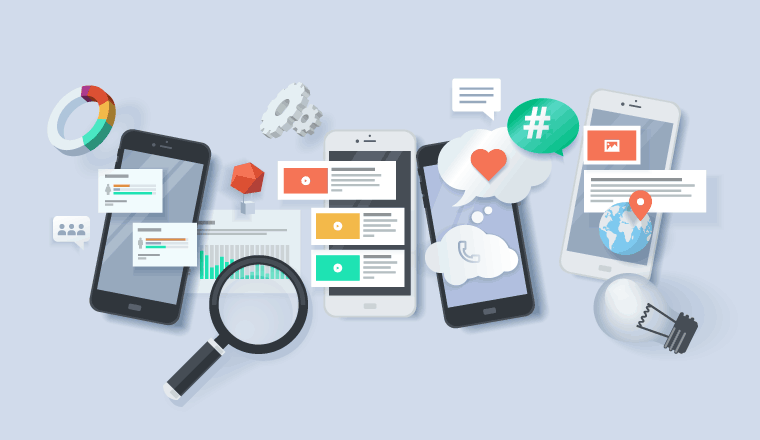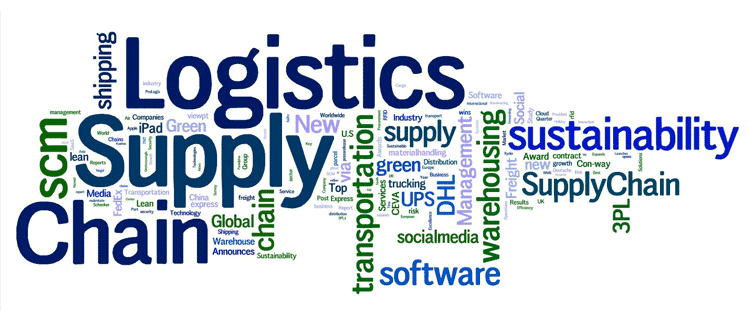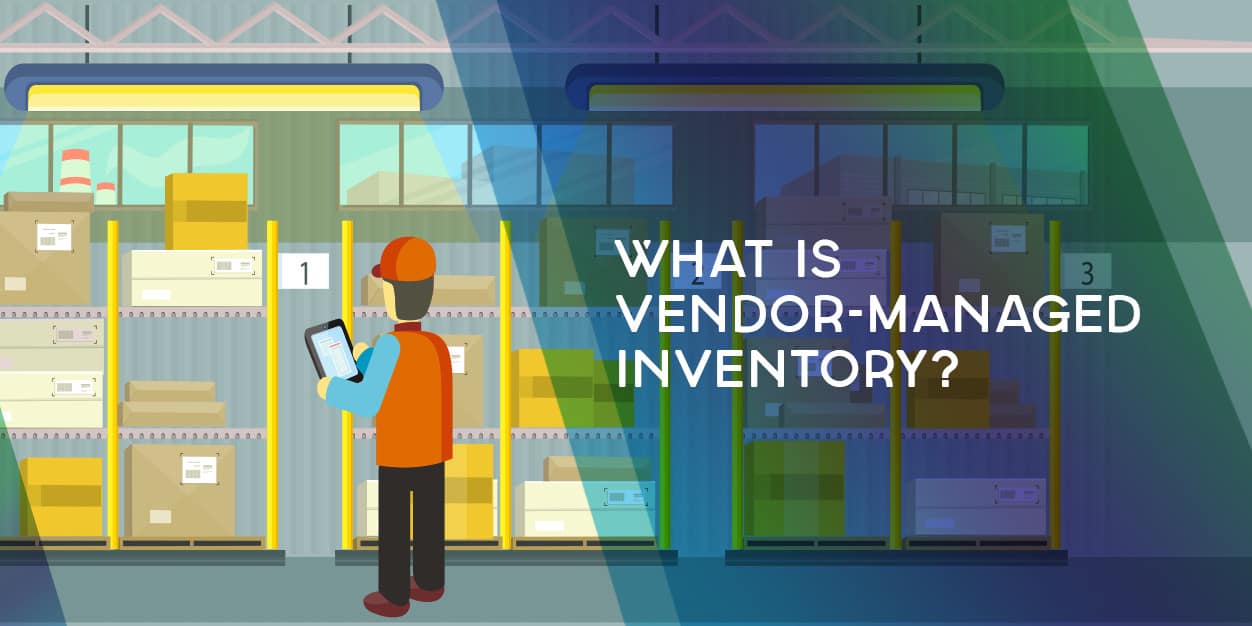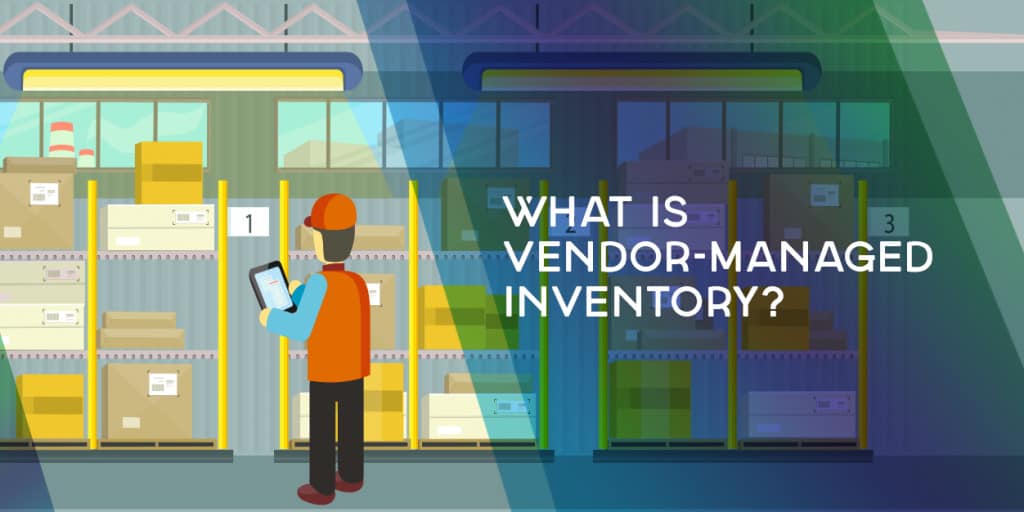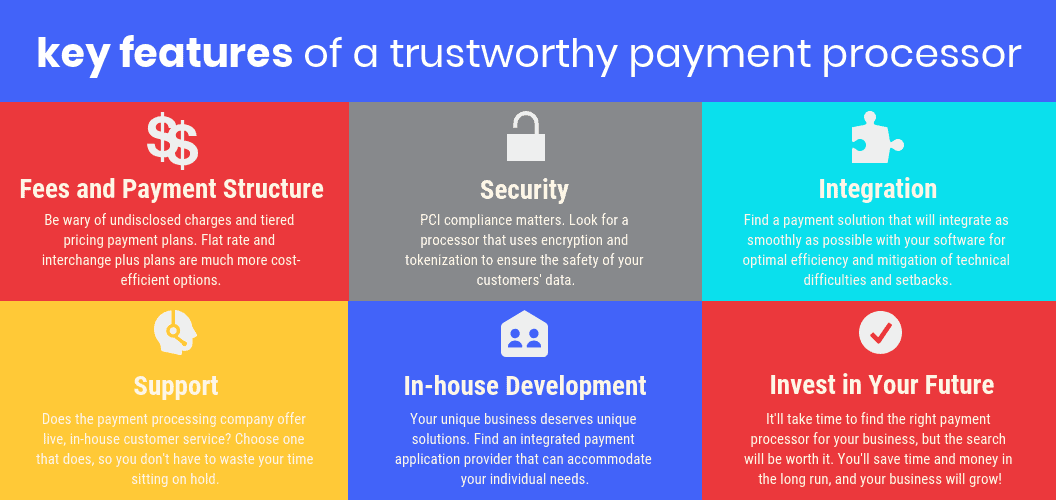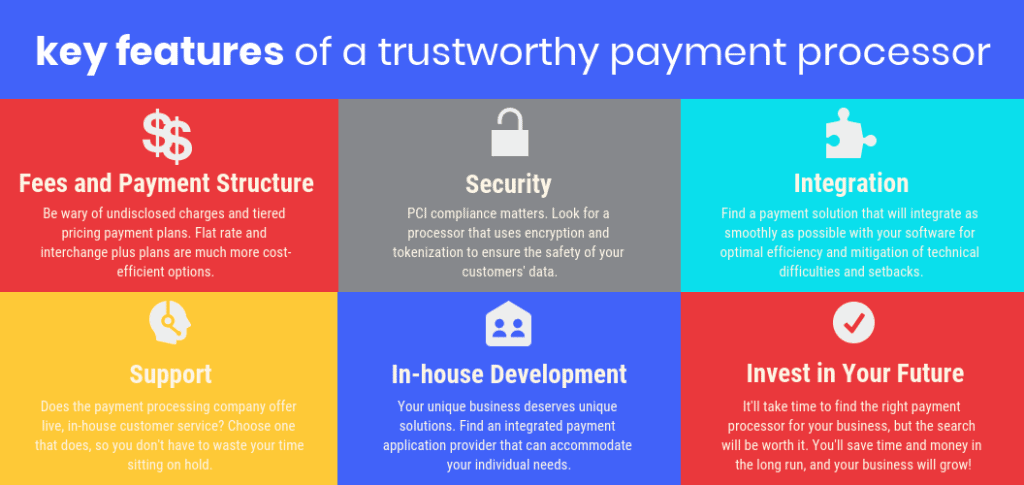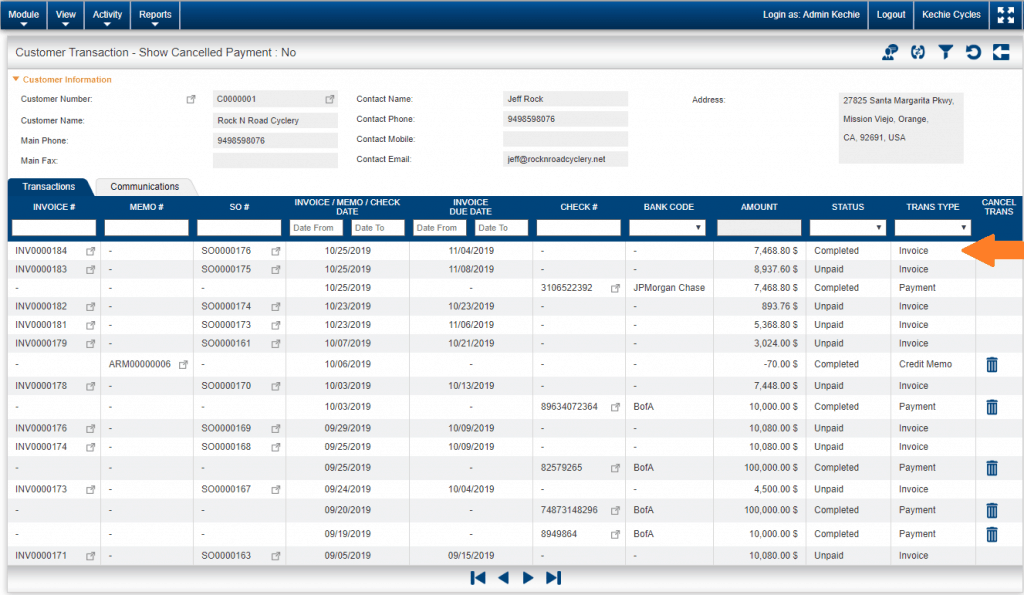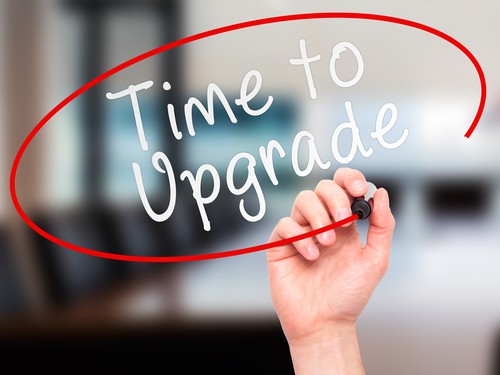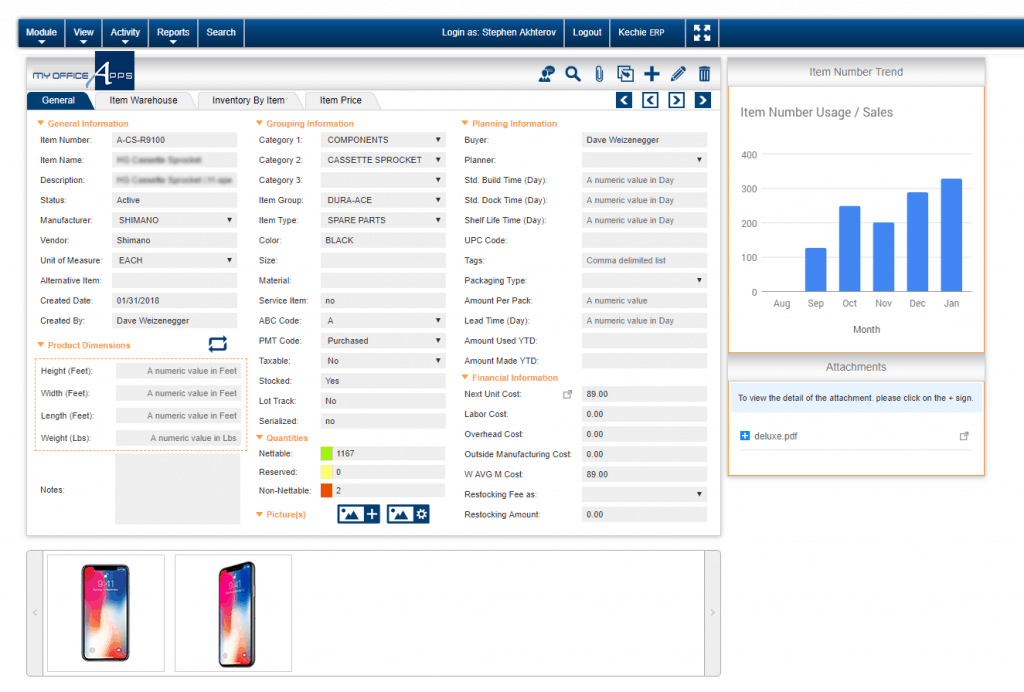Bullet-Proof your IT System in 2020
Bullet-Proof your IT System in 2020
As we move into a new decade, it seems we are regularly hearing of new security leaks which are costing companies millions. With the evolution of information technology, the “bad guys” continue to ramp up their game. Many CIOs and top managers are placing high priority on keeping their data systems secure from hackers — working to improve their software, systems, and procedures.
Smart managers are leveraging cloud-based technology advancements to keep their systems and data secure. The transition to cloud-based Enterprise Resource Planning (ERP) systems is rapidly transforming the security issues of the past. A common misconception of ERP systems is that on-premise systems will have better security than a cloud-based system. Let us take this opportunity to burst that bubble. A cloud-based system is MORE SECURE than one that you might operate on your own site.
 Why is Cloud-based Security Better?
Why is Cloud-based Security Better?
Software-as-a-Service (SaaS) providers are particularly focused on excelling in this area. SaaS providers utilize highly-trained staff to identify and eliminate potential security threats. With cyber-security experts, security is top priority. Corporate IT staff manage many responsibilities, and few are focused exclusively on the cutting edge of cyber threats.
Employing the right software to protect your data is equally important in warding off potential security threats. At My Office Apps, Inc., we partner with the Progress Software company for the back-end database functionality of our Kechie™ ERP software. Progress Software, founded in 1981, is one of the largest providers of database management software worldwide. The following security features are built into the software:
- Authentication: Security measures determine who is allowed ®into the system via User Interface (UI) or directly to API’s
- Authorization: Security levels determine what data each user can access
- Auditing: Security tracking verifies which user made changes
- Data-at-Rest: Security of data when stored in the application
- Data-in-Motion: Security of data when flowing through architectural components in the application
- Network Connectivity: Accessibility is safe inside and outside the application boundaries
The Kechie™ software takes advantage of these features by creating a smooth interface to security functionality and enhancements. For example, individual permissions can be programmed in the system for each user with NO ACCESS, VIEW, UPDATE, or ADMIN privileges. These permissions allow you to keep employees on a need-to-know basis and prevent unauthorized viewing, deleting, or changing of data. Another important feature is the CHANGE LOG function. Kechie™ provides built-in detection of data changes. Recovering from inadvertent errors is just a few clicks away. Finally, the cloud-based system has automatic data replication functionality. Should a database become invalid due to hacking or other reason, the replicated information is available for restoration while maintaining functionality for the end user.
While communicating your data over the internet, precautions must be taken to ensure that a bad actor can’t tap into the connection, read the data, or cause mischief with this information. The internet standard for this is called Transport Layer Security (TLS) and Kechie™ software fully complies. All data transmitted between the end user and the server is encrypted. If someone was able to intercept the data, he/she cannot decode it. Data-at-rest on the server is also encrypted preventing any decoding if hardware were to be compromised.
As companies look to 2020 information technology, many are gravitating toward cloud computing to ensure IT security and efficiency. It is critical that top managers use reliable, secure and accessible technology. With the Kechie™ ERP system, data and systems are secure. Leave the cyber-security to us … you have more important things to do.
My Office Apps, Inc. (MOA) is the leader in business improvement software solutions to automate your organization. Building on three decades of software design and development, MOA delivers Kechie™, a transformative business tool. Kechie™ is a fully integrated Enterprise Resource Planning Software as a Service (SaaS) with a simplified user experience and the latest in cloud technology. It is quick and easy to implement without the expensive price tag. Sold in separate modules – inventory management, ERP, finance, manufacturing – Kechie™ is easily configured to the scalable needs of your growing business. For more information on managing your business end-to-end or streamlining business processes, visit www.myofficeapps.com.
5 Social Listening Strategies for Success in 2020
5 Social Listening Strategies for Success in 2020
In this age of technology, social listening is an essential skill for all top managers. Facebook, Twitter and Instagram are not just platforms for the young at heart. Businesses have recognized the value of social media and engage their customers and end-users through these resources regularly. In a recent study by Smart Insights, top managers confirmed that active engagement positively influenced revenue and sales. With the exponential growth of social media in all we do, social listening has become an essential tool in maintaining awareness and monitoring the reputation of any business.
Customer pain points can be picked up with social listening. This medium affords the ability to respond to questions, complaints, and comments. Listening closely in these cyber spaces can provide managers with customer perspective which could affect the success of your business. In addition to monitoring your business, social listening can help track competitors and benchmark yourself in the process.
Pure Moderation, an online social moderation company, recommends 5 social listening strategies for business success:
- Actively join social media discussions for better feedback than focus groups
- Understand growing social trends and news
- Identify your influencers to spread the word from a trusted third party
- Recognize the need for product development from honest feedback
- Know your competitors by actively listening to the conversation
Continued development of listening skills at all levels of management is very essential for business success. If communication inside and outside the organization is to be purposeful, we must listen to each other attentively. Social listening clearly plays a significant role for all managers. Engaging in the conversation socially will provide insights into the strength and weaknesses of your products, services and organization. Progressive organizations encourage the people within to learn and adopt active listening in all areas of business.
My Office Apps, Inc. (MOA) is the leader in business improvement software solutions to automate your organization. Building on three decades of software design and development, MOA delivers Kechie®, a transformative business tool. Kechie® is a fully integrated Enterprise Resource Planning Software as a Service (SaaS) with a simplified user experience and the latest in cloud technology. It is quick and easy to implement without the expensive price tag. Sold in separate modules – inventory management, ERP, finance, manufacturing – Kechie® is easily configured to the scalable needs of your growing business. For more information on managing your business end-to-end or streamlining business processes, visit www.myofficeapps.com.
A Strong RMA Process is Vital to Your Business
A Strong RMA Process is Vital to Achieving World Class Customer Service
Most companies strive to achieve world class customer service. It is understood that repeat customers lead to business success. The key to maintaining long-term customer relations is to ensure communications, products and services flow seamlessly back and forth within the relationship.
Building a strong and specialized sales process is top of mind for any successful business. On the flip-side, how much thought and planning goes into ensuring the Return Material Authorization (RMA) process runs equally as well? In an ideal world, customers will never have a reason to return anything they have purchased from you. However, returns are a cost of business. A well thought out RMA process will impress upon customers that your company is easy to do business with and a valued partner.
An Enterprise Resource Planning (ERP) software package can provide great functionality to streamline the RMA process. The application can provide full tracking from the original request and more, such as:
- Conveying the RMA number
- Receiving the goods or materials
- Assessing warranty profiles
- Creating work orders for repairs or replacements
- Tracking locations of goods in the warehouse
- Shipping goods back to the customer
Customers are very appreciative of vendors who support cross-shipments. A cross-shipment is a method some companies will use to ship out a replacement part before the return is received by the manufacturer or distributor. This practice reduces the amount of downtime your customer will experience while displaying good faith within the relationship.
The benefits of utilizing an automated RMA tool provides timely information for continuous improvements for your business. For the selling partner, the process automates many steps as goods or materials flow back into the system by
- Providing detailed tracking of lot numbers, serial numbers, and warranties.
- Reducing possible fraud
- Identifying issues that might affect an entire manufacturing lot
- Allowing your service staff to enter reasons for a return into a database
- Classifying reasons for returns with search capability
- Distinguishing endemic errors in design, manufacturing, shipping or other processes
- Connecting actions that will eliminate or reduce these errors
- Automating updates and credits to the customer’s account
The goal of World Class Customer Service is to reduce the number of RMAs, lower replacement inventory, reduce your overall costs, and keep your customers coming back. Plan your process, listen to your customers and keep the goods and services flowing with a proven ERP process.
My Office Apps, Inc. (MOA) is the leader in business improvement software solutions to automate your organization. Building on three decades of software design and development, MOA delivers Kechie®, a transformative business tool. Kechie® is a fully integrated Enterprise Resource Planning Software as a Service (SaaS) with a simplified user experience and the latest in cloud technology. It is quick and easy to implement without the expensive price tag. Sold in separate modules - inventory management, ERP, finance, manufacturing - Kechie® is easily configured to the scalable needs of your growing business. For more information on managing your business end-to-end or streamlining business processes, visit www.myofficeapps.com.
5 Secret Tips for your Warehouse Strategy in 2020
5 Secret Tips for your Warehouse Strategy in 2020
The efficiency of a warehouse is crucial in the supply chain – and it can make or break a company’s bottom line. The goal is to keep customers satisfied and businesses running seamlessly. Wondering how you can streamline your warehouse for the 2020 year ahead? Read on for some essential tips on how to run a successful warehouse.
5 Warehouse Management Tips for 2020;
- Organize the Warehouse and Workstations
How have you organized goods? What methodology did you utilize? Organizing your warehouse improves productivity and maximizes efficiency. It should be designed to ensure accuracy, speed, and accountability. There are several strategies to optimize efficiency, including implementing a methodical location numbering system to easily identify a specific warehouse location – based on position, level, bay, aisle, and zone.
You can also de-clutter the warehouse by enforcing the ‘5s’ methodology (Sort - Set in order - Shine - Standardize - Sustain). Another proven warehouse organization strategy involves designing workstations according to the characteristics of the worker and specific tasks. This improves productivity and minimizes the risk of workplace illnesses or injuries.
- Use a Velocity-Based Layout
Traditional product placement layouts, such as grouping products based on the manufacturer or the type of product, are largely inefficient and time-consuming. Instead, you can improve your efficiency by implementing a velocity-based layout in your warehouse strategy.
By placing the frequently picked products closer to the shipping area, warehouse staff can easily and quickly pick the items on demand. Additionally, warehouse managers should consider integrating the packing and shipping stations to free up space and streamline the fulfillment process.
- Streamline Workflows
How do all of your warehouse resources fit together? Or better yet, how do you identify gaps in the processes? Warehouse managers can determine how departmental workflow and scheduling affect operations by creating a visual map. This allows you to understand how things are working, including the efficiency of the warehouse layout, storage of different materials, and handling of items. Simply put, streamlining workflows through visual mapping is like creating a well-oiled machine.
- Measure Results and Review Effectiveness
You can’t have 2020 vision for your warehouse strategy if you don’t measure and review the results. It’s important to analyze and gauge how you’re utilizing available resources.
What is the flow of goods in and out of the warehouse? Are there any inefficiencies in the chain that may negatively affect the bottom line? While analyzing the effectiveness of a warehouse, it’s essential to review the whole process – there’s no point in improving one system when another is lagging.
- Leverage Technology
Nowadays, there are tons of technologies designed to improve accuracy and increase productivity in a warehouse. Some of these tools include bin tracking, pick-to-label, bar codes, integrated CRM processes, and advanced inventory tracking methods.
It takes a lot to manage a warehouse efficiently with the influx of new requirements from clients with shipping and packaging deadlines. With the help of a great Warehouse Management System like Kechie®, you can integrate several real-time systems to ensure the seamless flow of data and efficient movement of goods in the warehouse. This leads to lowered costs, space management, increased accuracy, and easier analysis of results. Get a free demo to see how it can streamline your business operations today.
2020 Vision: 5 Shifting Business Trends for Visionaries
2020 Vision: 5 Shifting Business Trends for Visionaries
Let’s face it: The root of every successful business is timely decision-making. The best leaders can anticipate the future by recognizing the most important business shifts before changes become widely recognized by everyone else. These leaders are said to be visionary.
If you want to be one of those leaders, here are five business trends that are in their early stage. These will likely mature over the next few years and serve to re-shape businesses in the future. The way that you choose to respond to these could separate your company from the rest.
Five of the most critical considerations to ponder as we step into 2020 include:
- 24/7 Access - Customers want what they want when they want it. Therefore, businesses are challenged to provide their customers with access 24 hours a day, seven days a week. Fortunately, current mobile, social and web technology supports the creation of customer-centric portals to help businesses deliver 24/7 capability. The challenge is to craft a solution that can evolve and mature to accommodate tomorrow's latest technological innovations.
- Customized Products and Services - The next logical step is building the capability to deliver personalized products and services. Configuration of systems is key to increase customer satisfaction and loyalty. Remember the “Have It Your Way” slogan from that burger joint in the 70’s & 80’s? That specialization brings the customers back time and time again.
- Collaboration-Based Innovation - All the above adds up to another trend with collaborative innovation and product development. Think of it as an open, rapidly evolving group of users influencing the R&D function. This type of business model holds great promise because it can lead to the introduction of products with built-in demand.
- Cloud Computing - Cloud computing has changed the way businesses use computer technology. It has replaced the need to buy and maintain computing systems and hardware with a much more cost effective, on-demand model. When fully realized, cloud-computing promises to level the playing field by enabling smaller firms to compete with their biggest competitors.
- Balanced Growth and Profitability - In previous years, many entrepreneurs focused on growth at all costs. In 2020, economists say we can expect to see a return to a more balanced growth and profitability structure. In fact, we will see more companies with core profitability, balanced growth and solid unit economics have higher valuations.
The challenge as a 2020 leader, regardless of the industry in which your business currently competes, is to use these 5 considerations to re-imagine your strategic direction and make your business indispensable starting in 2020 and beyond.
At My Office Apps our Kechie ERP software was designed as a modern solution with these trends in mind. Are you ready to execute your plan? If the time is now, call us to see how we can help you achieve your goals and meet the business challenges of the 2020’s.
10 tips for complying with sales tax regulations
10 tips for complying with sales tax regulations
There’s nothing sexy about sales tax compliance. There really isn’t. But there is something mighty compelling about not running afoul of the tax authorities.
Following some simple tips can help put even the least assiduous person on the path to successful sales tax compliance. And so, without further ado, here they are:
- Confirm your customers’ tax-exempt status. Exemption certificates need to be accurate, up to date, and readily accessible.
- Don’t ignore tax notices. Nothing good ever comes from letting a tax notice molder at the bottom of your to-do stack, even if you’re sure you’re blameless.
- Efile when you can (and when you must). Some states require electronic filing for all businesses, while others prefer it. For more information about a particular state’s requirements, check out the Avalara TaxRates state guides.
- Find out if you’re required to make prepayments. If you are, your filing requirements may differ from the standard filing requirements. For example, returns for some prepayments must be filed online in North Carolina, while others must be filed on paper.
- Get to know state nexus rules. If you have sales tax nexus with a state, you’re required to register with the tax department and collect and remit sales tax. Nexus rules have been changing at a rapid rate since the Supreme Court of the United States removed the physical presence rule in June 2018; it’s now easier than ever for a state to impose a sales tax collection obligation on remote sellers. See this state-by-state guide to sales tax nexus for up-to-date information.
- Identify taxability rules in states where you collect. Taxability rules for products and services differ from state to state (even from city to city in some states). Be sure you’re collecting what you should wherever you have nexus.
- Keep excellent records. You’ll need them if you’re ever audited. Auditors need to be able to track and verify each transaction from start to finish.
- Update filing frequencies on your tax calendars. A change in your business can lead to a change in filing status. It’s up to you to know how frequently you’re required to file.
- Reconcile! Reconcile! Reconcile! Start with the account balance at the beginning of the accounting period, then add the amount billed to customers and subtract the sales and use tax paid. The end result should match the current balance of your sales tax payable account.
- Use geolocation to determine sales tax rates. Relying on ZIP codes can lead to inaccurate sales tax rates. Geolocation provides more accurate rates, down to the rooftop.
Finally, consider automating sales tax compliance. With Kechie Inventory, you can automatically calculate taxes due at the time of invoicing, with no extra steps needed. Kechie is integrated with Avalara, making the process seamless, and automatic! Sales tax compliance is both essential and thankless: Your customers won’t praise you for getting sales tax right, but they’ll be sure to let you know if you get it wrong. Automating sales tax calculation, collection, and/or remittance helps minimize costs and increase your chances of getting it right.
Want to know more? Get the updated Sales & Use Tax Compliance for Dummies ebook.
The Difference Between Logistics and Supply Chain Management
The Difference Between Logistics and Supply Chain Management
Most people assume that logistics and Supply Chain Management (SCM) refer to the same process. But as it turns out, the two terms are not interchangeable – and they’re merely different parts of the global flow of finished goods and raw materials.
So, how did the concepts of logistics and Supply Chain Management become so intertwined in their use when they mean very different things? The confusion surrounding the terms might be attributed to the evolution and intersection of the processes – resulting in blurred definitions. Read on for a differentiation of logistics and SCM, and an overview of a cloud-based ERP software that helps streamline both processes.
What is Logistics?
Logistics is the process of coordinating when and how goods are transported and stored until they reach the end customer – it’s a component of the supply chain. It typically involves one organization aiming to ensure customer satisfaction. Simply put, logistics is “having the right item - in the right quantity - at the right time - at the right place - for the right price - in the right condition - to the right customer.”
The process covers activities such as obtaining raw materials, storing, handling, transporting, fulfilling orders, packaging, managing stock, routing, warehousing, and maintaining a demand-supply equilibrium. Logistics management is further divided into two categories, as shown below:
- Inbound Logistics: This is the movement of raw materials and goods from a supplier to the company.
- Outbound Logistics: Outbound logistics basically refers to the movement of finished goods to the customer or end-user.
What is Supply Chain Management?
SCM is the comprehensive coordination of interconnected activities such as transportation, location, inventory, and production among participating organizations in a supply chain. The aim of Supply Chain Management is to produce services or goods that meet consumer requirements and offer the best value – i.e., a competitive advantage. It’s the outcome of multiple organizations, such as consumers, wholesalers, retailers, manufacturers, or suppliers working together towards a common goal. SCM activities include; inventory management, logistics, sales, CRM & customer service, production, procurement, and distribution, to name a few.
What are the Key Differences?
- SCM takes into account individualized issues, questions, and processes that impact the product, while logistics focuses on the storage & movement of goods.
- The main focus of logistics is satisfying and meeting the needs of consumers. Supply Chain Management is geared towards gaining competitive advantage in the market, and managing inventory processes.
- Supply Chain Management involves multiple organizations, while logistics is a one-organization process.
- Logistics is merely an activity within SCM.
What Type of Supply Chain Management should I use?
In the real world, every business has to deal with logistics and Supply Chain Management. The challenge arises when growth is inevitable, and the business struggles with scaling. How does an enterprise meet the increased consumer demand, reduce spoilage, and minimize storage costs? The increased complexity calls for effective and sophisticated tools, such as Kechie’s Supply Chain Management, which includes the essential, Kechie Logistics module. This solution is designed to streamline your supply chain processes, while managing your logistics - warehousing, packaging, & other inventory processes, seamlessly in one, easy to use, solution developed for growing businesses.
What is Vendor Managed Inventory? How to Make VMI Work
What is Vendor Managed Inventory? How to Make VMI Work
Looking to streamline your supply chain and reduce inventory costs? You might want to look into Vendor-Managed Inventory (VMI). A VMI software might be the solution – as long as you know the best practices to make it work. So, what is VMI, and what is the impact on your business?
Vendor Managed Inventory is a business arrangement where the vendor of a product takes responsibility for making sure the buyer has the agreed inventory. The supplier or vendor ensures the stock is replenished automatically without the buyer’s initiation. If done right, VMI is a win-win situation for both the vendor and the customer.
What benefits can VMI bring to your business?
- VMI helps cut operating costs – With the supplier handling the quantity and frequency of orders, you can reduce costs associated with personnel and space.
- Lean inventory levels – VMI allows your vendors to supply in-demand goods at the right time. This also removes the need for safety stock.
- Improved Efficiency – The speed of stock replenishment is improved, and the risk of running out of stock is reduced. This improved service trickles down to the end-users.
What are the benefits of VMI for the Manufacturer/Supplier?
- Forecasting is easier courtesy of access to the buyer’s Point of Sale data.
- An optimized VMI program ensures you supply what is needed, and at the right time. Visibility to inventory levels helps the manufacturer ascertain the need for a product before it’s ordered.
- Produces a predictable and steady flow of income while mitigating the risk of losing the customer to a competitor.
- VMI reduces ordering errors and helps the supplier schedule operations productively
- A VMI program facilitates a stronger Customer-Supplier relationship. Both parties must work closely together to ensure seamless inventory management activities.
Cons of VMI
Regardless of the benefits highlighted above, enforcing a VMI program has a few drawbacks that business owners should keep in mind. One of the main disadvantages of VMI is its impact on sourcing. It’s difficult for supply chain managers to consider re-sourcing when the current VMI program is well-run. Some managers might be compelled to compromise supplier-related issues such as higher prices due to over-reliance on a vendor.
Granting non-employees full access to your inventory data is a significant risk. Leaving your stocking needs to the mercy of a 3rd party makes your business vulnerable to errors by the supplier, and even sabotage from competitors.
3 Steps to a Successful VMI Program
- Clarify expectations – and make them realistic: How will the system impact the supplier and the company? Both parties should be engaged in honest discussions to ensure everyone understands the risks and returns of the arrangement.
- Share information seamlessly: The success of a VMI program rests on the quality of information shared between the two parties. The supplier/manufacturer must have full visibility into the inventory levels to ensure a steady flow of goods.
- Clear and open communication: Constant and open communication is vital to the sustainability of the VMI business model. This includes discussing goals and progress towards achieving them. Each side must prevent a breakdown in communication, especially when miscues arise.
To make the best of vendor managed inventory, it's important to utilize a complete inventory management solution to carry out all of the necessary steps on your behalf. Without insights into your inventory, it's difficult to have automatic replenishment of vendor-managed inventory and timely invoicing. That's why it's important to utilize an inventory management solution like Kechie software, which allows you to set up, and streamline your VMI, to maintain automated operations between the vendor and all of the tracked inventory.
Transform Your Business with the Right Payment Processor
Transform Your Business with the Right Payment Processor
More than meets the eye
Swipe your credit card, grab a receipt. Type in some numbers, receive an order confirmation. As a consumer, it’s easy to run your errands and do your online shopping without thinking about how a credit card transaction actually works. But as a small business owner, understanding the process is key to choosing the best accounting solutions and keeping your costs as low as possible.
Every credit card transaction involves several different entities: the cardholder (or customer), the merchant (or business), the network, the bank that issued the card to the cardholder, the card brand, and the payment processor.
When payment information is exchanged between the cardholder and the merchant, the network routes that information to the card-issuing bank for authorization. The network clears the transaction, and at the end of the day it collects funds for all the transactions that occurred in a given 24-hour time frame.
The card brands—Visa, Mastercard, Discover, American Express, etc.—regulate the industry with standards and fees and establish channels through which information passes. For the services they provide, card brands exact payment in the form of assessment charges. The network leverages authorization fees, and the card-issuing bank imposes interchange rates. It falls to the merchant to pay these processing fees, which can add up to a significant percentage of your credit card sales.
It doesn’t have to be that way
There’s only so much you can do to alleviate the pressure of credit card processing fees, but streamlining your accounting procedures and integrating a trustworthy payment processing platform can transform your business, save you time and money, and prevent headaches.
Manual invoicing and accounting is a long, tedious, error-plagued process. Cloud-based accounting or ERP software, like Kechie ERP by My Office Apps, simplifies small business operations by providing an easily accessible information hub from which users can quickly retrieve accurate information. Rather than storing sensitive information in filing cabinets, toggling between numerous spreadsheets, and manually tracking inventory, you and your team can manage your logistics in one secure location.
Even with accounting software, however, invoicing remains a pain point. Merchants have to create an invoice, run the transaction through their virtual terminal, create a cash receipt, find the invoice, and, finally, post the payment to the invoice. That’s a lot of time-consuming steps! And the more steps there are, the more potential there is for data entry error.
Enter the sixth entity in the transaction process: the payment processor. Some processors provide an integrated payment application, which automates the invoicing process, automatically posts payments to invoices, and updates your general ledger to keep your records accurate and eliminate the need for duplicate data entry.
The payment application integrates directly with your accounting or ERP software for a simple, seamless transaction experience. Some payment applications can even save you money by lowering your interchange rate and qualifying you for reduced processing fees. And if you choose a processor that offers an online customer payment portal, your customers can pay their invoices on their own time.
Look before you leap
A wide array of companies offer payment integrations, and they each tout their own list of enticing promises—attached to complicated conditions and ensnared in industry jargon. How do you know which companies you can trust to deliver?
Here are five key features to look for to help you choose the best payment processor for your business.
- Fees and payment structure: Many processors will tempt you with low costs, but they’re probably not being upfront about additional charges or shoddy customer service. If it sounds too good to be true, there’s a good chance it is. Ask for a cost savings analysis and be wary of tiered pricing payment plans. Flat rate and interchange plus plans are much more transparent and likely to lower your processing rates. Long-term contracts are giant red flags. Reputable companies are confident in their product and committed to earning your business month after month by providing continual value and excellent customer service.
- Security: Just because you’re a small business doesn’t mean you can fly under the radar. If you process credit cards, you need to maintain PCI compliance to keep your customers’ data protected. Look for a payment processor that implements encryption, tokenization, and off-site data storage. Additionally, a processor that offers Level 3 processing can save you money on interchange fees by lowering your risk of fraud.
- Integration: When you have a small team, you need your business tools to work as efficiently as possible. A payment solution should integrate smoothly with your accounting software to minimize the time your employees need to spend on payment collection and avoid technical difficulties. Best-case scenario: Find an integration built specifically for your software, like EBizCharge for Kechie ERP.
- Support: No one wants to waste valuable time sitting on hold, waiting to talk to a support team that may not be based in the United States. Ask a potential processing provider what kind of customer service they offer. It’s worth taking the time to find in-house, live support.
- In-house development team: Your business is unique, and your payment processor should be willing to accommodate your individual needs when it comes to your integrated payment application. In-house development teams can offer you customization options and fix bugs to prevent a minor snag from becoming a major setback.
Using an integrated payment application with your accounting or ERP software can revolutionize your workflows and lower your processing fees—if you invest the time and resources in finding the best option for your business. The more you know about credit card transactions, associated fees, and the functions of the processor and integrated payment application, the better equipped you’ll be to make a smart decision. Don’t be discouraged by the search! Your business deserves a payment processor that will help it reach its full potential.
How to Upgrade from QuickBooks to a Fully Integrated IMS
How to Upgrade from QuickBooks to a Fully Integrated Inventory Management Software
A step by step guide on upgrading your inventory management solution.
If you’d like to upgrade your business management system to something more capable than Quickbooks, but have hesitated due to the time and effort to make a change, we have news for you. It really is not as difficult as you think. Our Kechie ERP software is designed for small and medium sized businesses in your situation and has built-in features that make this transition easy.
We made it simple by dividing up the process into the following phases:
- Migrate your data from the old system to Kechie
- Train your staff on how to operate Kechie
- Run the systems in parallel for a short period of time to make sure there are no problems
- Once you have gone live with Kechie and everything is running smoothly, you can explore the additional functionality that Kechie can provide to increase the automation and efficiency in your operations.
Transferring All of Your Data
To start with the first phase, most businesses have a few different data-bases that help them manage their business. They usually revolve around:
- Customer Master Data
- Product Master Data
- Inventory Master Data
- Accounts Payable Data
- Accounts Receivable Data
- Current Balance Sheet
- Historical Completed Customer Orders
- Customer Orders, yet to be Completed
- Historical Vendor Purchase Orders
- Vendor Purchase Orders that have yet to be Completed
- And perhaps a few others
Transferring this data manually, could be very time consuming, but Kechie has a great Data Import feature that will automate most of the work. As long as your old system can export the data into either a CSV or XLS spreadsheet format, the team at Kechie has functionality that can import these files into the Kechie system during implementation. These software routines will save considerable time. While doing this, some customers may use this as an opportunity to clean up their data and eliminate obsolete products or customer information, but it’s important to get this done before the import for your sake!
Using Your New Software
When using a new software system, people are always worried about training and getting used to the new system. Kechie has been carefully designed to provide an intuitive menu system that can be learned very easily. In addition, once someone has been trained to use one Kechie module, they will find that the menu arrangements for other Kechie modules are quite similar and learning how to use these is even quicker. When lost or stuck there are help videos within each of the major modules, as well as, a help desk to submit any questions or problems you might have.
When converting to a new system, it is always wise to run the two systems in parallel for a short period of time. It is always worth the extra effort to make sure that something major hasn’t been missed in the transition, because the cost of fixing a problem later can be much higher.
The Initial Transition
For the initial transition, most of our customers will just concentrate on starting to run Kechie with the same functionality that they experienced with their previous system. This is a good strategy, because it allows your team to focus on the initial transition and doesn’t introduce too many changes. However, we emphasize that is just a way to get started. The real value of Kechie is that it will enable you to scale, by providing you more modules and functionalities as you have need of it. You can activate some of the additional features available in Kechie and improve both the efficiency of your operations, as well as, your visibility into how well things are going.
For example, your old system did not support functionality related to manufacturing or purchasing. Once you are comfortable the other Kechie modules are running smoothly, you can then start automating these additional functions to achieve even further streamlined benefits of the system. Since the software has been designed to be highly integrated, once you do activate these additional modules, relevant data from them will start appearing automatically in the modules you were previously using.
A great example might be; when a manufacturing job is completed, the inventory module is automatically updated to show the additional inventory. Your team won’t have to manually enter in this data from an Excel spreadsheet or other ad hoc method you were previously using.
Let's Get Started
The team at My Office Apps will work with you every step of the way. Because our team has great experience working in a multitude of different manufacturing and service companies, we have been in your shoes. Our philosophy is not just that we are providing software, but we are helping our clients improve their business through automation and enabling more efficient procedures. We can advise you on how best to make this transition and offer suggestions on how you can improve your internal operations to get the maximum advantage of our software features. With Kechie, our customers can typically make the transition in weeks and not months, so they can look forward to enjoying the benefits of a more modern, easy, integrated ERP system. To learn more about Kechie and how you can upgrade, contact us. We’d love to show you how we can help you gain visibility and efficiency to grow your business.


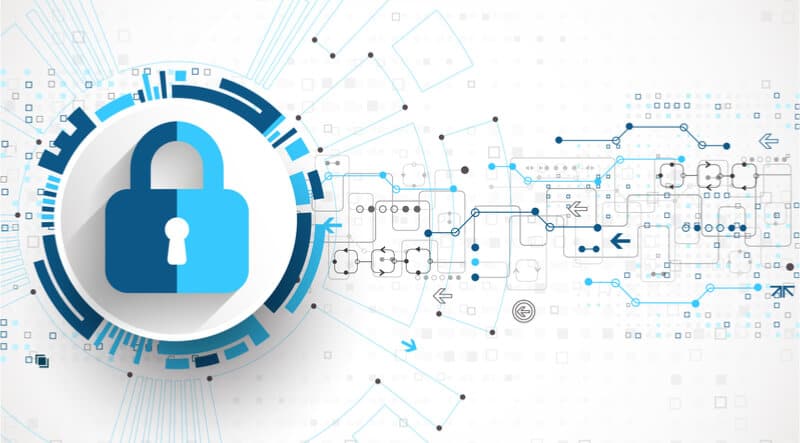 Why is Cloud-based Security Better?
Why is Cloud-based Security Better?